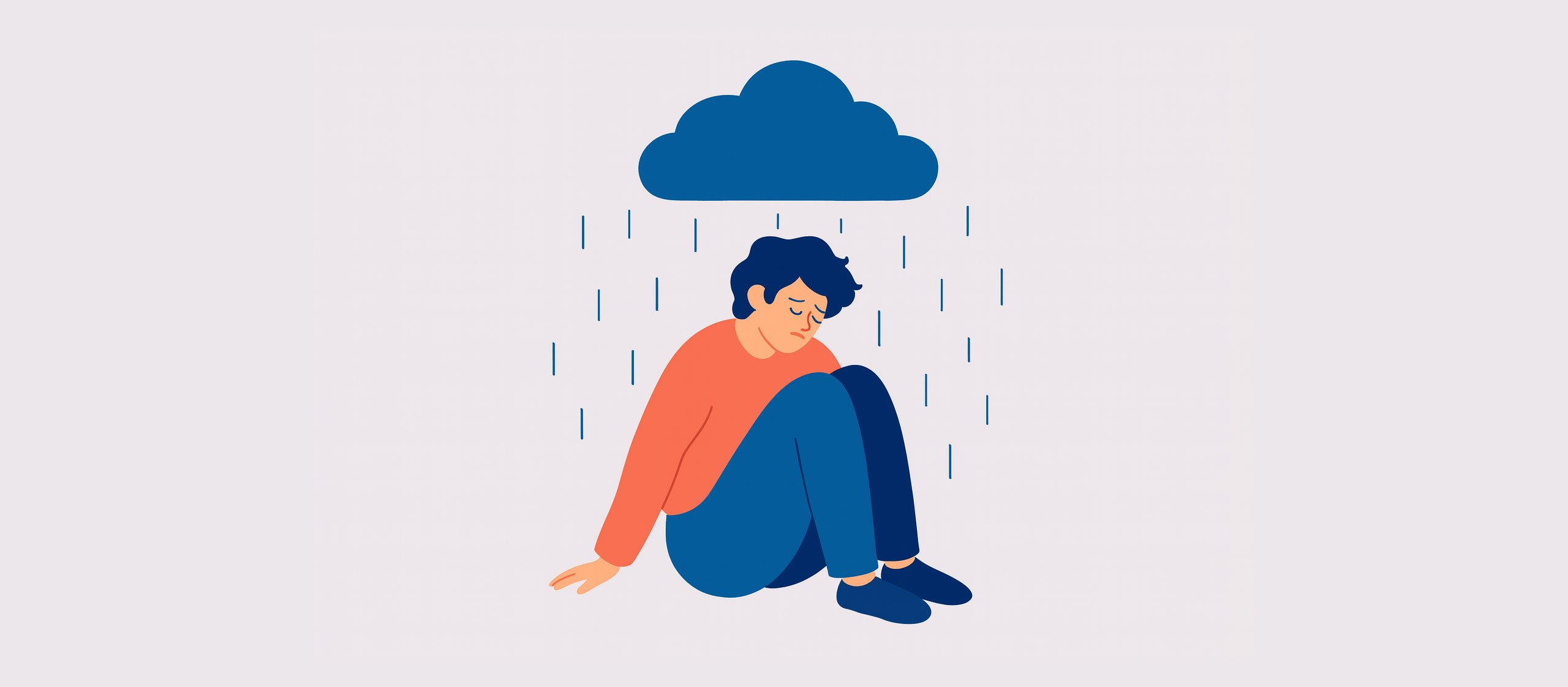This is a review of Dr. Bill Howatt’s thought-provoking article found here:
https://www.talentcanada.ca/misery-is-not-mental-illness-learning-through-lifes-emotional-weather/ .
Misery as a Teacher, Not a Diagnosis: A Review of Bill Howatt’s Perspective on Emotional Pain
In his article “Misery is not mental illness: Learning through life’s emotional weather,” Bill Howatt debunks the prevailing cultural myth that equates emotional pain with pathology. He argues that misery—-not the poetic melancholy or dramatic despair of the arts, but the subtle, gnawing ache that results from life’s inevitable struggles—is an inherent, essential aspect of the human condition. Through a nuanced parsing of emotional literacy, mental health paradigms, and cultural conditioning, Howatt makes a compelling case for reframing how we think about and do something with emotional pain. His central thesis is simple: misery is not a mental illness, but a rich emotional state that, when explored and embraced, can foster growth, resilience, and a deeper understanding of self.
Howatt begins by outlining a disturbing trend in contemporary society: the pathologizing of misery. In response to a world that is ever less tolerant of pain and more addicted to quick solutions, those who suffer emotional harm—through job loss, heartbreak, failure, or disappointment—are too often misdiagnosed or misunderstood. According to the author, misery is all too regularly confused with mental illness, prompting unwarranted medical interventions and decreasing our ability to grow emotionally. He states that misery, though disagreeable, is not in itself problematic. Rather, it is a signal, a message from within that some aspect of one’s life requires attention, contemplation, or editing. By reframing misery as a normal, even necessary, part of personal development, Howatt challenges readers to reconsider their relationship with emotional pain.
Turning to philosophical and spiritual traditions, Howatt situates misery within the broader context of the human experience. He refers to Buddhism’s concept of dukkha—the suffering inherent in life—Christianity’s concept of suffering as a path to salvation, and Stoicism’s embrace of pain as a clarifier of values. These traditions, he argues, have a lot to instruct us about the purpose of misery in the formation of character and wisdom. But in Western culture, and particularly in the workplace, there exists no tradition for how to handle emotional strife. This absence of emotional coaching has led to many misinterpreting their misery as abnormal, adding to feelings of shame and isolation. Howatt believes that misery is not a malfunction but a mirror, reflecting those aspects of life that may be out of balance and offering the opportunity for reflection and transformation.
One of the primary models that Howatt employs to differentiate between mental illness and mental health is Corey Keyes’ “dual continua” model. This model assumes that mental illness and mental health are not two sides of the same coin but two separate dimensions. One may be absent of mental illness but still be emotionally unwell, or, on the other hand, someone who is living with a mental illness can have happiness, meaning, and connection. This paradigm shift allows for a richer understanding of emotional experience, wherein temporary misery is not an indication that one is broken or mentally ill. Misery, in this model, is akin to emotional weather—temporary, instructional, and ultimately tolerable. In accepting this model, Howatt encourages individuals and practitioners alike to meet emotional pain with curiosity rather than fear, and compassion rather than judgment.
One of the strongest points of Howatt’s article is his rebuke of the cultural trend to pathologize negative emotions. In a culture fueled by instant gratification and feel-good fixes, many have lost their tolerance for discomfort. Such an emotional allergy is expressed through self-soothing behaviors like substance use, compulsive shopping, excessive screen time, and other escapist activities. These activities, albeit temporarily anesthetizing, deprive individuals of the opportunity to learn from their pain. Howatt warns that this kind of avoidance can lead to the misinterpretation of emotional pain as a mental disorder, when it might well be a normal response to an abnormal circumstance. He urges a shift away from numbing and toward awareness—recognizing that grief, loneliness, rejection, and failure are not only inevitable but significant.
At the center of Howatt’s argument is the concept of emotional literacy, a skill set he believes has been overlooked in favor of emotional intelligence. While emotional intelligence deals with managing emotions and handling social interactions, emotional literacy is about naming, understanding, and coming to terms with one’s emotions. Howatt foresees a future where people are educated from an early age to sit in sadness, respect emotional injuries, and not try to fix or suppress pain right away. Emotional literacy, he claims, is the basis for resilience, self-knowledge, and true healing. By developing this ability, people can learn to create space for their emotions, acknowledge their importance, and act thoughtfully in response.
The implications of emotional literacy, as presented by Howatt, are deep. If more individuals knew that short-term emotional pain is not a marker of weakness, society can decrease addictive tendencies, diminish stigma for emotional variability, and prevent the over-pathologizing of normal sadness as a clinical problem. Further, emotional literacy can create resilience in workplaces and communities, increase a sense of purpose, and enable healing through wisdom instead of avoidance. Howatt’s vision is one of empowerment—where individuals are equipped to navigate life’s emotional terrain with grace, dignity, and insight.
In a particularly poignant section, Howatt addresses the idea of living well while feeling unwell. He challenges the notion that happiness is the only acceptable emotional state, arguing instead for the pursuit of personal fulfillment. Misery, he asserts, does not preclude joy, creativity, or connection. One can be sad, anxious, or demoralized and still be engaged with life in a full way—loving their children, showing up for work, laughing at a joke, or creating something beautiful. This recognition is liberating, in that it dismantles the either-or quality of the thinking that equates emotional suffering with dysfunction. It also emphasizes the importance of self-compassion and the recognition that healing is a process, not a destination.
Howatt also discusses how shame perpetuates emotional pain. While sadness can be processed and released, shame tends to isolate and immobilize. When individuals are ashamed of their pain, they are less likely to seek help and discuss what is happening. Such secrecy can exacerbate emotional pain and make it more difficult to heal. By de-stigmatizing suffering and promoting emotional literacy, Howatt believes we can create communities where individuals feel free to express emotions and ask for help. Healing, he notes, comes from processing emotions—not bottling them up.
The article concludes with concrete recommendations for employers and mental health clinicians. Howatt urges organizations to be purposeful in mental training, incorporating emotional literacy into resiliency, flourishing, and mental fitness initiatives. He emphasizes that negative emotions are not to be avoided but are great instructors if they are observed and analyzed. Just as physical development involves pain and exertion, emotional growth requires a willingness to learn from suffering by leaning into it. By fostering open conversations of sorrow, failure, and difficult days, employers can develop cultures of authenticity and support.
Last but not least, Howatt’s message is a message of hope and empowerment. By educating people that misery is normal, not abnormal, we give them the power to grow, to heal, and to reclaim their agency. People can’t always control how they feel, but they can control what they do about it. By the embrace of misery as a teacher, rather than as a threat, we can build resilience, deepen our sense of self, and build communities that honor the full spectrum of human feeling.
Briefly, “Emotional pain is not mental illness: Learning through life’s emotional weather” is a powerful call to rethink emotional suffering. Bill Howatt rebuffs the cultural imperative to pathologize suffering and instead prescribes emotional literacy, self-kindness, and a valuing of wretchedness as a fundamental part of the human condition. With philosophical insight, psychological theory, and practical guidance, he offers a map for navigating life’s emotional terrain with wisdom and ease. His work is less a critique of modern mental health theory than a testament to the power and richness that accrue when we stop running from pain and start hearing what it may have to teach.


